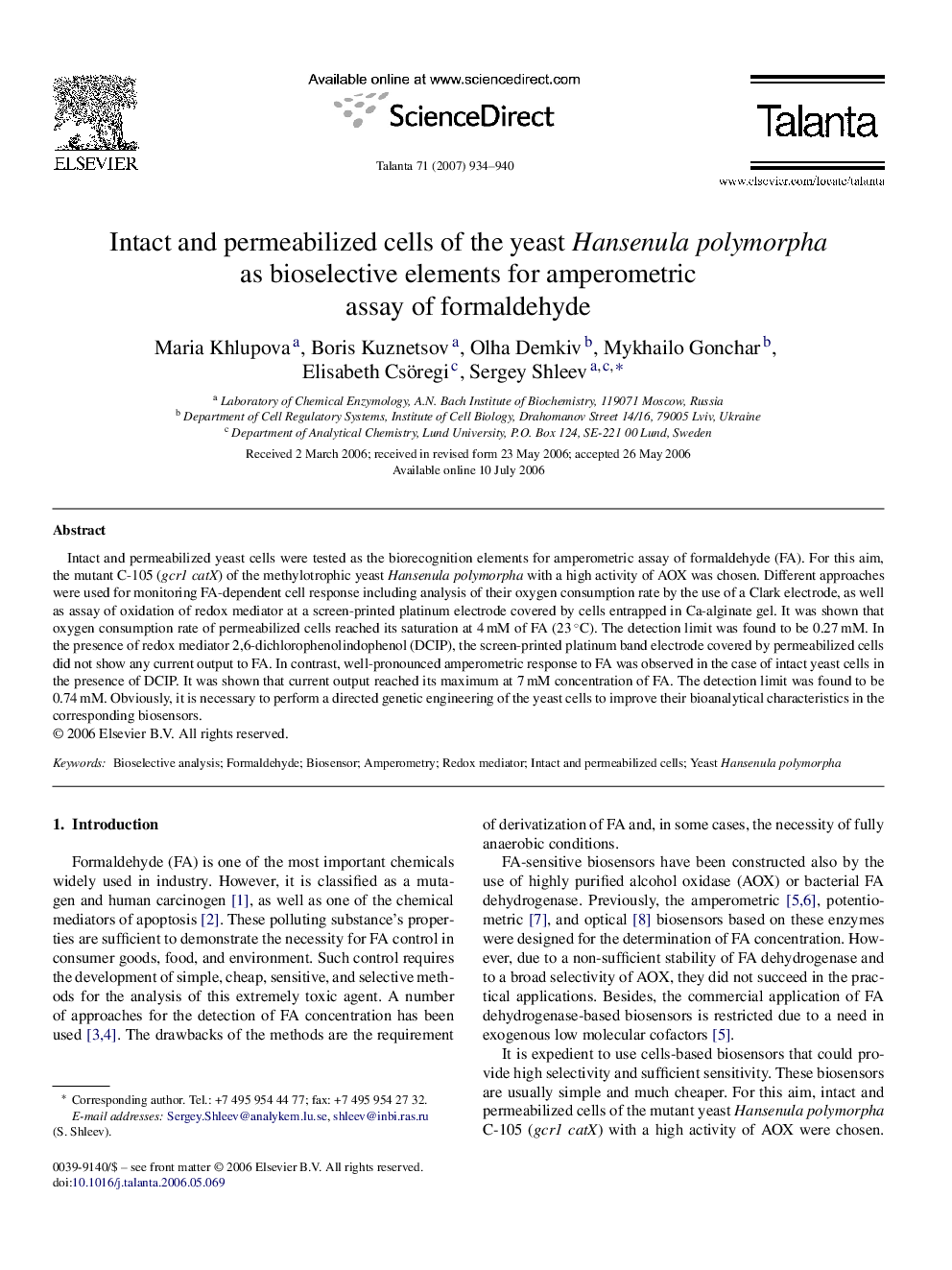| Article ID | Journal | Published Year | Pages | File Type |
|---|---|---|---|---|
| 1244276 | Talanta | 2007 | 7 Pages |
Intact and permeabilized yeast cells were tested as the biorecognition elements for amperometric assay of formaldehyde (FA). For this aim, the mutant C-105 (gcr1 catX) of the methylotrophic yeast Hansenula polymorpha with a high activity of AOX was chosen. Different approaches were used for monitoring FA-dependent cell response including analysis of their oxygen consumption rate by the use of a Clark electrode, as well as assay of oxidation of redox mediator at a screen-printed platinum electrode covered by cells entrapped in Ca-alginate gel. It was shown that oxygen consumption rate of permeabilized cells reached its saturation at 4 mM of FA (23 °C). The detection limit was found to be 0.27 mM. In the presence of redox mediator 2,6-dichlorophenolindophenol (DCIP), the screen-printed platinum band electrode covered by permeabilized cells did not show any current output to FA. In contrast, well-pronounced amperometric response to FA was observed in the case of intact yeast cells in the presence of DCIP. It was shown that current output reached its maximum at 7 mM concentration of FA. The detection limit was found to be 0.74 mM. Obviously, it is necessary to perform a directed genetic engineering of the yeast cells to improve their bioanalytical characteristics in the corresponding biosensors.
